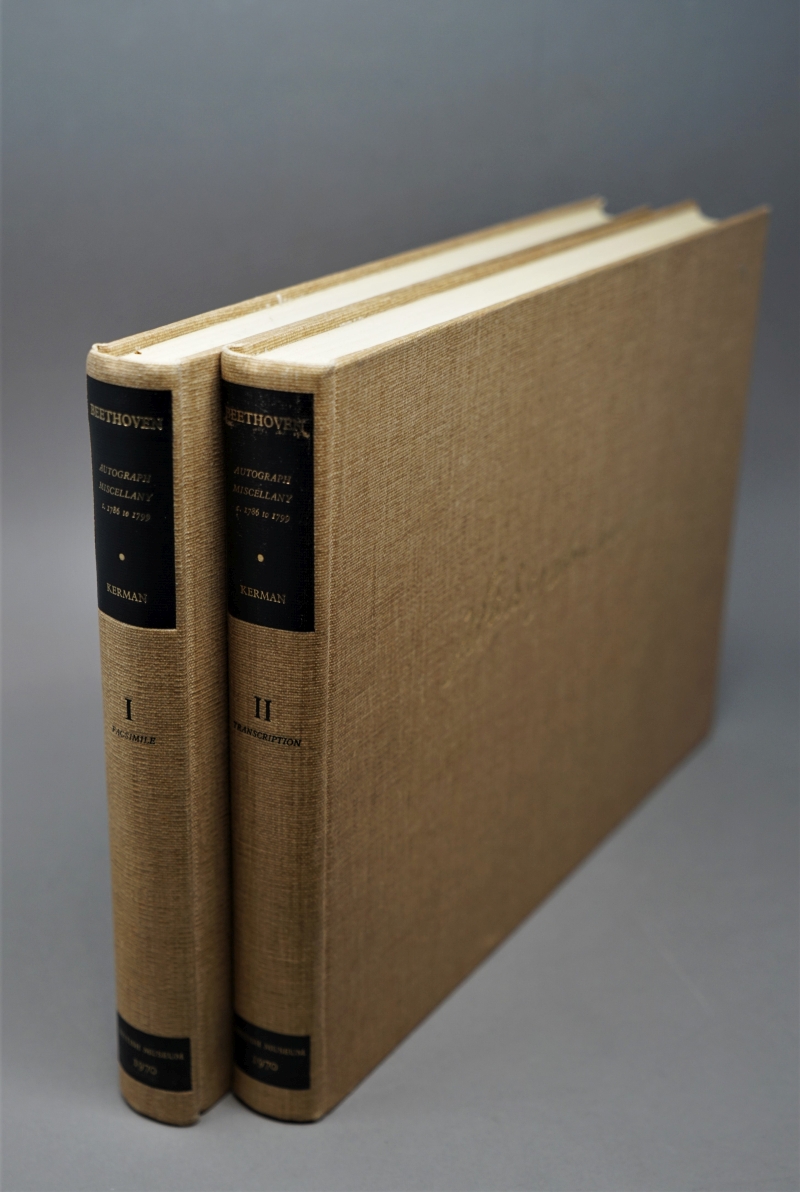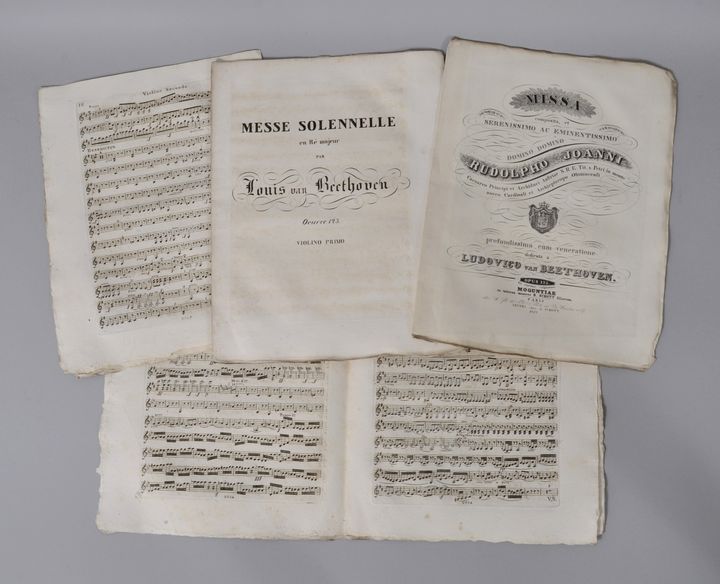BEETHOVEN, Ludwig van (1770-1827). IMPORTANT COPYIST'S AND WORKING MANUSCRIPT OF PART OF THE CODA TO NO.14, THE QUARTET IN ACT 2 OF FIDELIO with AUTOGRAPH REVISIONS BY THE COMPOSER, comprising the reworking of the original version of Leonore for the final form of Fidelio , beginning with the twenty-fourth bar after the second trumpet signal announcing the arrival of Don Fernando, (Leonore: 'die Liebe wird im Brune') and continuing until the forty-seventh bar, the twenty-first bar before the end of the quartet, one system of 16 staves per page, with Beethoven's autograph revisions in pencil and black ink in at least 18 bars, 8 pages, oblong folio, (235 x 315mm.), [Vienna, Spring 1814] This manuscript represents the revision of the dramatic and musical climax of Beethoven's opera, prepared for the final version of Fidelio , first performed in May 1814. In the quartet, Beethoven presents the final confrontation between Pizarro and Leonore and Florestan, whom Pizarro has come to kill and to whom he has revealed himself. Beethoven's revisions include resetting the text and music and adding dynamic markings. Several phrases are reworked more than once, making this manuscript an important working manuscript rather than simply a corrected copy. These alterations were made between March and May 1814, when Beethoven was working on the revised form of the opera. The request from the Kärntnertor-Theater to revive Leonore was a result of Beethoven's popularity during the closing months of the Napoleonic wars. Beethoven agreed to the request, with the provision that there should be a number of revisions to the earlier versions of 1805 and 1806. Treitschke undertook the alterations to the libretto. Beethoven also agreed that the work be known as Fidelio , by which name it had been advertised in the 1805/6 versions, although the composer preferred the title Leonore , which is the name commonly used today to distinguish the earlier versions. The revised version was first given on 23 May 1814, without the new overture which was only ready for the second performance on 26 May. It is for this final immediately successful form of the opera that the present revisions were made.
BEETHOVEN, Ludwig van (1770-1827). IMPORTANT COPYIST'S AND WORKING MANUSCRIPT OF PART OF THE CODA TO NO.14, THE QUARTET IN ACT 2 OF FIDELIO with AUTOGRAPH REVISIONS BY THE COMPOSER, comprising the reworking of the original version of Leonore for the final form of Fidelio , beginning with the twenty-fourth bar after the second trumpet signal announcing the arrival of Don Fernando, (Leonore: 'die Liebe wird im Brune') and continuing until the forty-seventh bar, the twenty-first bar before the end of the quartet, one system of 16 staves per page, with Beethoven's autograph revisions in pencil and black ink in at least 18 bars, 8 pages, oblong folio, (235 x 315mm.), [Vienna, Spring 1814] This manuscript represents the revision of the dramatic and musical climax of Beethoven's opera, prepared for the final version of Fidelio , first performed in May 1814. In the quartet, Beethoven presents the final confrontation between Pizarro and Leonore and Florestan, whom Pizarro has come to kill and to whom he has revealed himself. Beethoven's revisions include resetting the text and music and adding dynamic markings. Several phrases are reworked more than once, making this manuscript an important working manuscript rather than simply a corrected copy. These alterations were made between March and May 1814, when Beethoven was working on the revised form of the opera. The request from the Kärntnertor-Theater to revive Leonore was a result of Beethoven's popularity during the closing months of the Napoleonic wars. Beethoven agreed to the request, with the provision that there should be a number of revisions to the earlier versions of 1805 and 1806. Treitschke undertook the alterations to the libretto. Beethoven also agreed that the work be known as Fidelio , by which name it had been advertised in the 1805/6 versions, although the composer preferred the title Leonore , which is the name commonly used today to distinguish the earlier versions. The revised version was first given on 23 May 1814, without the new overture which was only ready for the second performance on 26 May. It is for this final immediately successful form of the opera that the present revisions were made.





.jpg)







Testen Sie LotSearch und seine Premium-Features 7 Tage - ohne Kosten!
Lassen Sie sich automatisch über neue Objekte in kommenden Auktionen benachrichtigen.
Suchauftrag anlegen